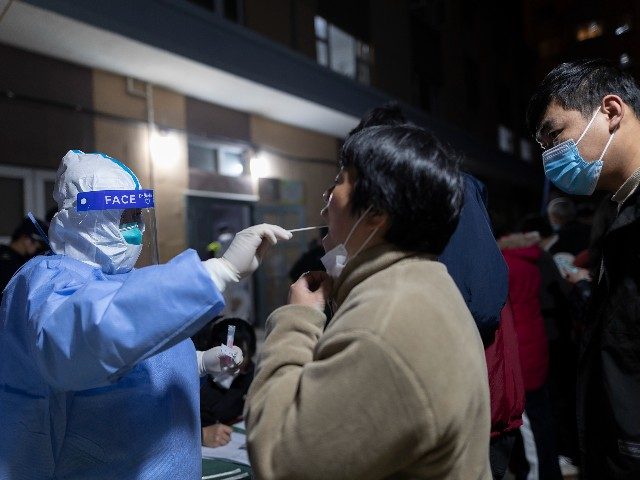China’s central city of Wuhan, known as the origin site of the Chinese coronavirus, ordered an entire district of nearly one million residents to lock down on Wednesday for at least three days to contain allegedly only four new cases of the disease detected in the area Tuesday, Reuters reported.
Wuhan’s municipal government announced late on July 26 that all 900,000 residents of the city’s Jiangxia district would be expected to observe a 72-hour lockdown order starting on July 27. The edict included bans on large gatherings, group events, and dining at restaurants. The city notice also ordered all of Jiangxia’s public entertainment venues, farmers’ markets, and small medical clinics to shut down during the three-day span, along with local bus and subway lines.
Roughly one million Jiangxia residents were confined to their homes as of Wednesday morning as the lockdown edict stipulated that all locals must “not go out unless necessary,” Bloomberg reported.
“It also urged residents not to leave the area during the three days and encouraged travellers to avoid entry,” Reuters noted of Jiangxia’s movement restriction notice.
Wuhan’s government began working to seal off Jiangxia from the rest of the city late Tuesday night after health officials in the district allegedly detected two new cases of the Chinese coronavirus “during regular testing drives” and discovered an additional two infections while contact tracing. Bloomberg described the four Chinese coronavirus cases in Jiangxia on July 26 as “asymptomatic.”

The railway police are on duty in the waiting room on April 7, 2020, in Wuhan, Hubei Province, China. The Chinese government lifted travel restrictions from April 8, after almost 11 weeks of lockdown to stem the spread of COVID-19. (Stringer/Getty Images)
China’s ruling Communist Party adheres to a strict “zero tolerance” policy when dealing with fresh outbreaks of the Chinese coronavirus. This policy allows authorities to order lockdowns of entire residential districts or even cities should they claim to detect new cluster infections of the disease, with the movement restrictions often lasting weeks at a time. The anti-epidemic protocol applies whether or not a local caseload is largely asymptomatic or symptomatic. This was recently demonstrated in Shanghai, where the entire metropolis of 25 million-plus residents was forced into a lockdown on April 5 after local health officials detected mainly asymptomatic infections of the Chinese coronavirus locally. Shanghai’s city-wide lockdown officially lasted through June 1, though sporadic stay-at-home orders persisted throughout the financial hub through June and July.
Wuhan last suffered a Chinese coronavirus flareup in April, Bloomberg recalled on Tuesday, describing it as a “small outbreak.” The media outlet said Wuhan detected a “handful” of Chinese coronavirus cases between June and July before recording the four new infections on July 26.
Wuhan is known as the original location of the Chinese coronavirus because it was the first location on Earth to report cases of the then-novel coronavirus in late 2019. The city of 11 million initiated the world’s first lockdown to contain the disease in January 2020, though the measure ultimately failed to stop the Chinese coronavirus from spreading beyond Wuhan. The World Health Organization declared the disease outbreak a global pandemic on March 11, 2020.

COMMENTS
Please let us know if you're having issues with commenting.